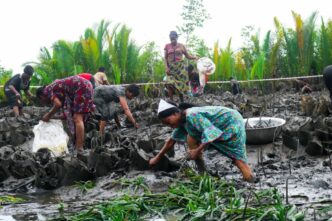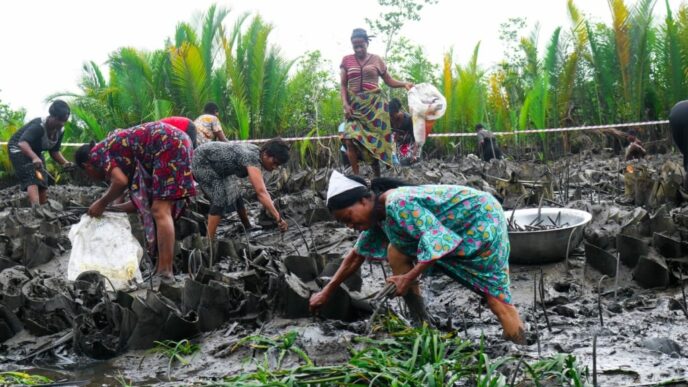BY BEULAH ADEOYE
As Oyo state positions itself for industrialisation, we are on the brink of a revolution that could transform this region into an African powerhouse. Oyo’s journey may seem monumental, but it is also a realistic one, and when you examine the successes of countries like Singapore and Rwanda, it becomes clear: It is not about waiting for the perfect time but about taking bold steps to create the right environment for growth.
If a small country like Singapore can become a global leader in technology, manufacturing, and infrastructure, why can’t a state like Oyo, rich in natural resources, culture, and potential, do the same? This first series in my exploration of Oyo state’s industrialisation journey takes a deep dive into the backbone of any modern economy.
In 1965, Singapore was a mere dot on the global map, struggling with poverty, a lack of resources, and political instability. Fast-forward to today, and Singapore is one of the most developed countries globally, with world-class infrastructure, a thriving economy, and a high standard of living. How did they do it? Through strategic investments in infrastructure – from roads, bridges, ports, to airports and utilities – and a relentless focus on creating an environment conducive to business and industry. Rwanda, despite its turbulent past, has mirrored this strategy in recent decades. Under the leadership of President Paul Kagame, Rwanda has invested heavily in modernising infrastructure, building one of the best road networks in Africa, and attracting international investors with its business-friendly environment.
Advertisement
Oyo State finds itself at a similar crossroads. Unlike Singapore and Rwanda, however, Oyo is a sub-national entity, and this presents a unique set of opportunities and challenges. While the federal government is often bogged down by national concerns, Oyo has the chance to make decisions and create infrastructure that directly caters to its own needs. By focusing on local infrastructure, Oyo can bypass some of the bureaucratic hurdles and move at a faster pace, much like Rwanda did in its recovery post-genocide.
To understand where we are going, it is crucial to take stock of where we are now. Oyo state, particularly its capital Ibadan, is already one of the most important cities in Nigeria. Ibadan is Nigeria’s third-largest city, with a bustling economy driven by agriculture, trade, and education. But its infrastructure – roads, power, transportation – still lags behind what it could be. The good news? We have seen the first steps of change under Governor Seyi Makinde’s leadership.
One of the standout developments has been the emphasis on road infrastructure. New roads are being built, old ones are being reconstructed, and connectivity is being enhanced to ensure Oyo is well-positioned to serve as an industrial hub for Nigeria and the West African region. For instance, Governor Makinde led government has taken bold steps to build “model roads” that will not only support industrialisation, but also open up access to previously neglected regions like Oke-Ogun, Ogbomoso, and Ibarapa. The idea is simple: connect all the parts of Oyo state, creating a seamless flow of goods, services, and talent.
Advertisement
Another key infrastructure component is the provision of power. “Without power, there can be no meaningful progress.” That’s the mantra driving Oyo’s energy strategy. Governor Makinde has already initiated, executed and commissioned a pilot project for alternative power solutions, including mini-grid power hubs, to provide a reliable, sustainable energy supply to industries, businesses, and households. This is significant because stable electricity supply has been a chronic challenge for many industrialising nations. Oyo state’s pursuit of an energy mix that includes solar, wind, and other sustainable sources will position the state as a leader in power generation in Africa.
Just as Singapore capitalised on its geographical location, access to the sea, and strategic international partnerships, Oyo state must look inward and harness its unique advantages. The state is blessed with an abundance of natural resources, fertile land, and a youthful, vibrant population. The development of infrastructure that supports agricultural production, mining, and manufacturing will ensure that these resources don’t just stay in the ground or stay in raw form.
The key to Oyo’s success lies in creating self-sufficient infrastructure that fosters local industry. The Ikere Gorge Dam project, for instance, offers a brilliant opportunity to create hydroelectric power while boosting agricultural productivity, aqua-tourism and fisheries in Oke-Ogun primarily and Oyo state in general. The dam will provide water for irrigation, support rural livelihoods, and facilitate the growth of agro-processing industries.
But infrastructure isn’t just about roads and electricity; it’s about building bridges between the people of Oyo state and the global economy. Singapore’s success, for instance, has been largely built on its strategic investments in its port infrastructure, which has made it one of the busiest shipping hubs in the world. Rwanda has created a similar transformation by investing heavily in road networks, making it a key player in regional trade.
Advertisement
Oyo state must develop its own infrastructure hub that connects it to national and international markets. This includes the development of industrial zones, transportation corridors, and export processing zones (EPZs) that allow businesses to trade globally. By investing in critical infrastructure, Oyo will become a logistics hub in West Africa, helping businesses in Nigeria and across the region export their goods more efficiently.
Government leadership is key, but it is also up to the people of Oyo state to play their part. In Singapore and Rwanda, citizens are active participants in the development process, contributing their expertise, resources, and ideas. Oyo citizens must rise to the occasion, too. From grassroots involvement in urban planning to the encouragement of local entrepreneurship, Oyo must adopt a “think local, act global” mindset. This is the time for the people to stop waiting and to start building.
The future of Oyo’s infrastructure is in our hands. Citizens, businesses, and communities need to actively support the ongoing projects spearheaded by the government. We must demand accountability from our leaders while also playing our part by investing in the local economy, supporting infrastructural development projects, and pushing for policies that will enable further growth.
Let’s stop thinking of infrastructure as just a government responsibility. The successful industrialisation of Oyo depends on all of us. It’s time for a change in mindset – from passive observers to active participants in the shaping of Oyo state’s future.
Advertisement
In the coming editions, we’ll explore education, power, security, culture, and other sectors, each of which will play a crucial role in the industrialisation of Oyo. Stay tuned. Oyo state is ready to rise – and we all have a part to play.
Advertisement
Views expressed by contributors are strictly personal and not of TheCable.
Add a comment










